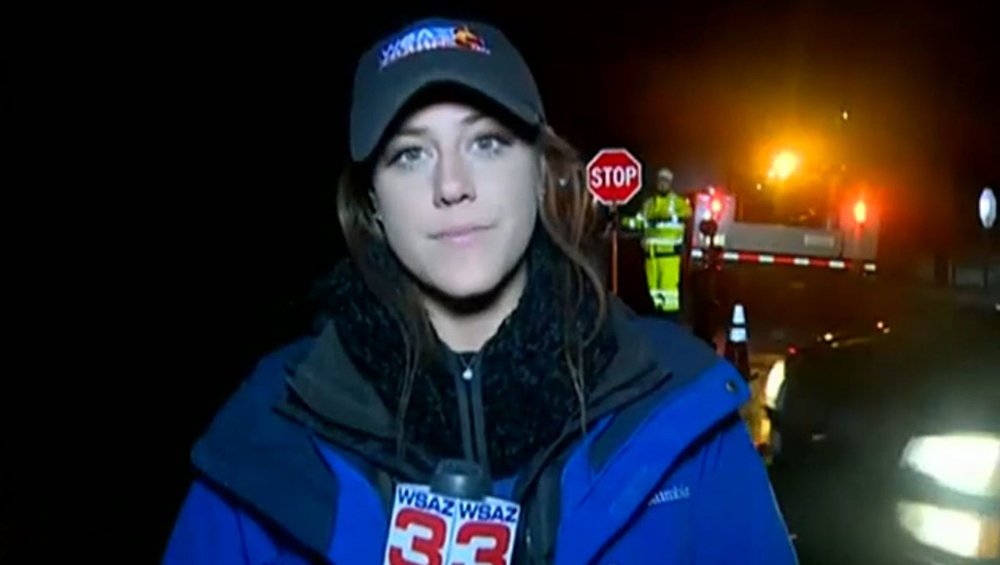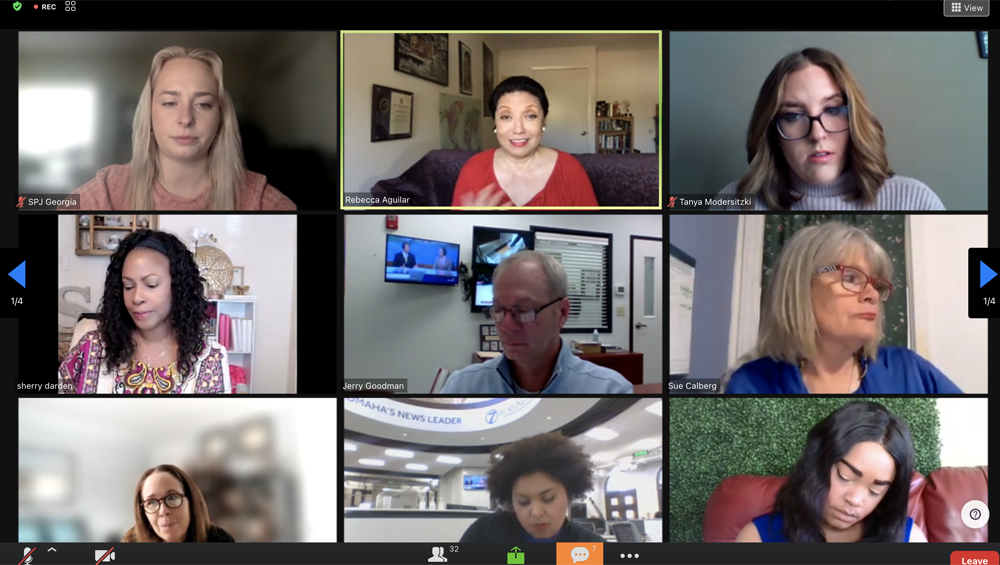
MMJs Prodded To Insist On Safety

After WSAZ Charleston-Huntington, W.Va., multimedia journalist Tori Yorgey was struck by a car while executing a stand-up during a latenight newscast in January, Jerry Goodman, who’d only recently been named news director at Gray-owned WALB Albany, Georgia, sent a message to his employees that prioritized safety above all else and stressed that the entire newsroom team must do their best to keep such an incident from happening at their station. Leadership would be there to support them.

Panelists at the second multimedia journalists safety virtual discussion organized by the Society of Professional Journalists after WSAZ Charleston-Huntington, W.Va., MMJ Tori Yorgey was struck by a car while executing a stand-up during an evening newscast.
“I felt like it was just time to clarify and make sure everyone knew they weren’t going to be put in that position,” Goodman said Saturday during a virtual panel discussion about multimedia journalist safety, organized by the Society of Professional Journalists (SPJ), the second such town hall-style meeting coordinated by the group since Yorgey was hit.
Goodman wrote WALB’s first “MMJ Safety-First Policy” guide shortly thereafter. He said it covers “not just solo live shots, but basic newsgathering, door knocks, being at places where there’s drinking, encountering someone that seems agitated, interviews, breaking news, weather, traffic, all of it.”
The big takeaway for MMJ’s who read it? “If you don’t feel safe when you get to a location, leave,” Goodman said.
In light of the Yorgey accident — in which she fortunately escaped serious injury — it’s clear that more MMJs would like to see more of that kind of care out of management.
Tanya Modersitzki, an MMJ for Cox-owned KOKI Tulsa, Okla., said it’s not always easy to get producers and other higher-ups to understand the risks MMJ’s take or accept an MMJ’s claims that they are unsafe. During her previous stretch of employment at a different station, she suggested to management that producers there step into the field with their MMJ’s on a regular basis so as to “see the elements,” she said, “and the people we endure at these breaking news scenes.” Though she’s since moved on from that newsroom, she said the station has since included such a step in their training programs for directors and producers.
“I’m so happy I stood up for that,” Modersitzki said. She then advocated for MMJ’s to have more “tough conversations” like the one she had, with management, producers and directors, “because they’re in the office all day” and are simply unaware of what the MMJ field experience is like.
“House cats need to go outside occasionally,” said Sue Calberg, an MMJ at Tegna-owned KENS San Antonio, Texas, who’s spent 43 years in the industry and said she faced three attacks in the field within just the past couple of years, two of which involved weapons. “If they go outside, the house cats will have an entirely different perspective on what we’re dealing with.”
Calberg said KENS has a guidelines sheet posted in every car that’s used by field workers, outlining staff-agreed-upon steps and precautions they each should take to better ensure their safety. A line at the top of the sheet bears a boldfaced message: “No story is worth your life.”
“We’re all on the same page,” Calberg said. “That goes a long way [in] keeping people safe because before anything ever happens, we all know it’s the person who’s in the field, whose life is on the line, who gets to make that call,” regarding their own safety.
MMJs can take steps to ensure their safety before they ever even decide to file a report. Sherry Darden, a consultant who helps businesses create positive and productive work environments, said employees across industries, including TV news, are more empowered than at any other point in recent history and should feel free to steer themselves away from a station where managers won’t have their safety at the forefront of their minds.
“Employees as a whole don’t take advantage of the interview process,” Darden said. Interviewees, she added, “sit back and are a little passive,” but the people who “make it” are “the people who ask questions.
“And part of the questions should not necessarily be, ‘Well, what’s my shift going to be?’” Darden continued, “but ask, ‘What are the safety precautions?’ Ask them about OSHA restrictions and allowances and those kinds of things. Call your [potential] employer on it.”
If the organization’s representative can’t answer such queries, Darden said, perhaps the MMJ should seek employment elsewhere. But perhaps these days there’s less reason for MMJs to presume broadcast team managers won’t have a safety-first attitude. According to Mary Cavallaro, chief broadcast officer for SAG-AFTRA, and an attorney who’s represented many media clients, they’re increasingly contractually obligated to, with safety stipulations finding their way into more unionized MMJ worker agreements.
“One of the first things we focus on in any of our safety language is the right to decline an assignment,” Cavallaro said. “You might be surprised by the reaction that we get when we make that proposal for a union contract. Some of our employers are actually offended that we would make that proposal.”
Cavallaro also said she’d like to see more newsroom personnel who can handle the emotional response an MMJ or any field worker might have to an incident in which their safety was threatened or violated.
“We need to focus on when they come back to the station, or when somebody’s checking on them, what kinds of things you say to that person, because they have really been traumatized and I don’t think people are trained in how to talk to somebody who might be experiencing that trauma,” Cavallaro said.
Hopefully, fewer and fewer MMJs will ever be faced with such distressing moments. Some suggestions on preemptive steps they can take to avoid them were shared during the discussion.
“Take 30, do a 360,” said KENS’ Calberg, who teaches this procedure to newcomers. “It’s an industry standard. Take 30 seconds, look around. Look at your car, look behind your car, look at the neighborhood. Is it safe?”
She added that the more field workers repeat the behavior, the safer they’ll be.
“The best practices are [achieved through] muscle memory,” Calberg continued. “You have to do it every time. That’s how you learn and that’s how you live.”
Calberg also advocated for field workers to include a “safety check” alongside the “mic check” and “IFB check” they engage in with producers, directors and folks in the control room. The safety check should then signal a momentary stop on the part of everyone involved with the report to examine their surroundings and make sure they’re safe.
KOKI’s Modersitzki said her producers “always have my back” when it comes to safety. Like it is for any relationship to thrive, for MMJ’s and their managers, communication is key.
“They know that my judgment is the best call,” she said. “It’s a team effort.”


































Comments (0)